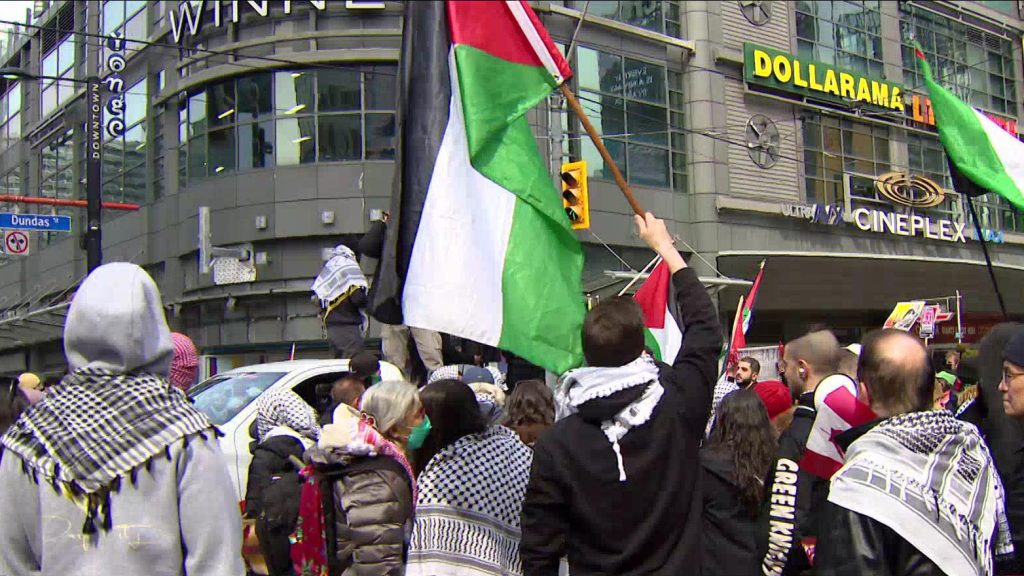NDP wants to make traffic congestion a federal issue
Posted September 5, 2011 9:12 am.
This article is more than 5 years old.
Summer relief from congested thoroughfares is about to end — and with it the relative free ride that Ottawa has enjoyed over Canada’s traffic woes.
Though grumbling about traffic jams is a cross-country phenomenon, federal politicians have largely avoided incurring the wrath of disgruntled motorists.
But municipal and provincial politicians, citizen groups, and now the official Opposition want Ottawa to play a bigger role in the effort to reduce congestion in Canadian cities.
“It is a well-being issue and a quality-of-life issue,” said Jamie Nicholls, the NDP’s deputy critic for transport, who represents a suburban Montreal riding.
“But there is also an economic argument to be made and the government is not showing leadership on that file.”
Nicholls said his party will raise the issue when the Commons returns later this month. The NDP is also planning to reintroduce a bill calling on the government to adopt a national transit strategy.
It marks a new battlefield for a question that has, until now, been handled almost exclusively by lower levels of government.
Most roads fall under provincial or municipal jurisdiction and the Conservative government is cautious about stepping on jurisdictional toes.
As one Tory official explained: “We don’t want to get involved in our neighbours’ problems.”
But whether Ottawa likes it or not, it is getting dragged into the congestion question.
Nowhere is this more true than Montreal, which became ground zero for the new politics of traffic this summer.
Major road and bridge repairs were already snarling traffic at all hours when in July a 25-ton chunk of concrete fell from a tunnel onto an important Montreal expressway.
With public complaints at a fever pitch, the Quebec government had four ministers sit with Montreal Mayor Gerald Tremblay to deal exclusively with the city’s traffic problems.
Premier Jean Charest chaired the meeting himself.
The common front wrapped up its get-together with an exasperated demand for Ottawa to make up its mind about what to do with the Champlain Bridge — Montreal’s most important link to the mainland and the cause of many a traffic jam.
The 49-year-old bridge is the busiest in Canada — an estimated $20 billion in international trade crosses it each year — but recent engineering reports say it is at risk of collapse and should be replaced soon.
Yet other than to say he is studying all options, federal Transport Minister Denis Lebel has maintained a stony silence on the issue.
Lebel’s office refused an interview request for this story, saying the minister had nothing to add in terms of when a decision could be expected.
The Opposition charges the government is caught up in partisan political calculations that ignore the effect delays will have on commute times.
“It’s arrogance on the part of the government,” Nicholls said of Lebel’s continued silence. He suggested it may be due to the Tories’ poor performance in Montreal during the last election.
“Perhaps on the political side, they’re looking at Montreal and saying ‘well there are no blue seats so why should I give any money to that.'”
For transport experts, Lebel’s silence is only complicating the task of replacing the bridge, given that between six and 10 years will be needed to build a new structure.
Until they move on the bridge’s future, they are in effect contributing to the problem, said Florence Junca-Adenot, an urban studies professor at the Universite du Quebec a Montreal.
“I honestly don’t understand the silence of the federal government,” said Junca-Adenot.
“When you understand the economic impact, the impact on a region and province, it’s obvious that they should make it a priority.”
The status of the bridge has even begun to preoccupy the city’s de facto royalty. Montreal Canadiens forward Max Pacioretty expressed worry he won’t be able to get to the team’s south shore practice facility on time.
“Been hearing a lot about the champlain bridge (sic). What’s going on with it?” he tweeted recently.
“How long will it take to get to brossard (sic) in the morning from Mtl?”
Montreal is far from a unique case. Aging infrastructure across the country has cities scrambling for cash to pay for badly needed renovations.
In the meantime, as cities and the number of cars expand, traffic problems are increasingly becoming an economic liability.
A 2009 study estimated traffic costs the Canadian economy around $5.2 billion per year. It is most costly in the Toronto-Hamilton area, where annual losses are close to $2.5 billion.
Montreal is second with estimated losses of $1.4 billion, and Vancouver third with $927 million.
But even these estimates may lowball the true cost of traffic jams.
“If someone is seriously suffering congestion, they adapt,” said Robin Lindsey, a transportation expert at the University of British Columbia’s business school.
“But there are costs to that adaptation. They leave home earlier for work… so there are hidden costs of congestion which don’t always get quantified.”
In order to push governments to act, citizen groups are emerging in big cities in order to lobby officials around specific transportation issues.
Junca-Adenot, who is a spokesperson for one such group in Montreal pushing for more public transit, said the phenomenon is indicative of the level of frustration with government inaction.
“When things are going well, you rarely see such pressure groups,” she said. “But when things aren’t going well, it stimulates citizens to take charge.”
Some people believe the federal government doesn’t have to stick to just funding specific infrastructure projects if it wants to play a more effective role dealing with traffic.
Currently the federal government transfers about $2 billion annually to municipalities from gas-tax revenues, 25 per cent of which is set aside for public transit. The recent budget pledged to make this transfer permanent.
“It’s a good start but it is not enough,” said Junca-Adenot, who would like to see Ottawa up the percentage for public transit.
She said Canada is one of the few developed countries in the world that doesn’t have a dedicated national transit strategy.
“If you don’t have steady long-term financing, it’s very difficult for transport organizations to plan their investments,” Junca-Adenot added.
But while additional funds are always welcome, Lindsey warns it is far from clear Ottawa should be the ones providing them.
Debates within the policy circles have suggested lower levels of government may have better knowledge about their traffic issues.
“The argument is, at the municipal level, you have people who know the system on the ground,” Lindsey said. “And they, in principle, can make better decisions.”
That still leaves other avenues for the federal government to get involved. Junca-Adenot said it could help foster research in transport technology, kick-start pilot projects, or simply provide political leadership.
“Cities fall within provincial jurisdiction, I don’t have a problem with that,” she said.
“But at a certain point we need an urban strategy that covers all the provinces.”










